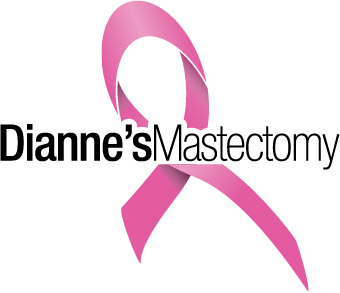About Reconstruction
What is reconstruction?
Breast reconstruction is a type of surgery that rebuilds the breast mound so that it is approximately the same size and shape as it was before. Some women may choose to have this surgery following a mastectomy. It can be preformed at the same time as your mastectomy or at a later date.
There are different types of breast reconstruction and the best method for you will depend on several factors. Some factors to consider when determining which is best for you is the size/shape of your breasts, whether one or both breasts have been removed, the amount and location of body tissue to be used (abdomen, buttock, thigh), and whether you have had, or will have, radiation treatment.
The 3 main types of reconstruction are:
1) Reconstruction using an implant
2) Reconstruction using your own tissue (Autologous Reconstruction)
3) Reconstruction using your own tissue combined with an implant (Latissimus Reconstruction)
What can I wear immediately after my reconstructive surgery?
It is highly recommended that you wear a compression bra after reconstruction. This will keep your breasts secure and comfortable while you are healing. It is specially designed to stabilize breast tissue during the healing process and maintain the natural shape of the operated breast after surgery. The skin-friendly and soft cotton material allows for comfort while you are healing. Velcro straps allow for individual strap adjustment and easy access to bandages or for dressing should arm mobility be restricted post-surgery. The Velcro will not bulge underneath clothing. Seamless, molded cups provide an even distribution of compression across the chest. Side panels are built with anatomical seams to support proper shape and fit. A wide band provides comfort where incisions often sit after surgery, the width will ensure your comfort by avoiding digging or rubbing to this sensitive area.
The compression belt (sold separately) helps to keep breast implant(s) from migrating upwards in the chest during the healing process, thereby maintaining a natural breast shape post-surgery.
I’ve had reconstruction but I don’t want to do further nipple surgery, what can I do?
Reconstruction of the nipple usually takes place several months after breast reconstruction to allow proper positioning. After the healing time of breast reconstruction has passed, some women choose not to undergo further surgery. In this case, there are natural-looking silicone nipples that can be used directly on the skin or on a partial or full breast prosthesis to provide a natural look.
Why might I need a breast prosthesis during the reconstruction process?
Reconstruction surgeries are performed in stages, meaning there will always be a period of time that a woman has to wait between each surgery; this can be anywhere from three months to a year depending on the patient. This is a challenging time as breasts will be uneven, particularly in the case of reconstruction on one side and a natural breast on the other. During this time, a partial prosthesis can be worn to create visual balance and symmetry. There are partial breast prostheses specifically made to “grow with you” as your reconstructed breast size increases. These options include layered silicone prostheses, as well as silicone fronted prostheses with a fibre-filled backing. These styles can also be used for breast growth during pregnancy after reconstruction.
Why might I need a breast prosthesis after reconstruction?
Some women find a significant difference in size between breasts following reconstruction and will wear a partial breast prosthesis to restore natural balance and symmetry. A difference in size may occur due to weight gain/loss after reconstruction, weight/breast size changes during pregnancy, aging changes in the body, or may be the case directly following the original reconstructive surgery.
What questions are important to ask my doctor before surgery?
Can I have referrals from women who’ve had the same surgery?
Can I see photos of both successful and unsuccessful reconstruction surgeries?
Will my reconstructed breast match my other breast?
What types of reconstruction could I have?
What is the reasoning behind the type of reconstruction you have suggested for me?
What are the short and long-term effects of different types of reconstruction?
What happens when I gain or lose weight?
How will aging affect the reconstructed breast?
Will I need a blood transfusion? If so, can I donate my own blood?
What are my options if I am dissatisfied with the outcome?
What complications may occur and how are they handled?
Will I have feeling in my reconstructed breast?
What do I do if my arm swells (called lymphedema)?
What is the follow up plan for me after surgery?
How many surgeries might I need?
What is my risk of infection?
Will I still be able to have a mammogram if I get implants?
If my breast cancer came back, how would I know? What should I look for?
Will there be pain, scars, or changes in the parts of my body tissue is taken from (if using tissue flap)?
